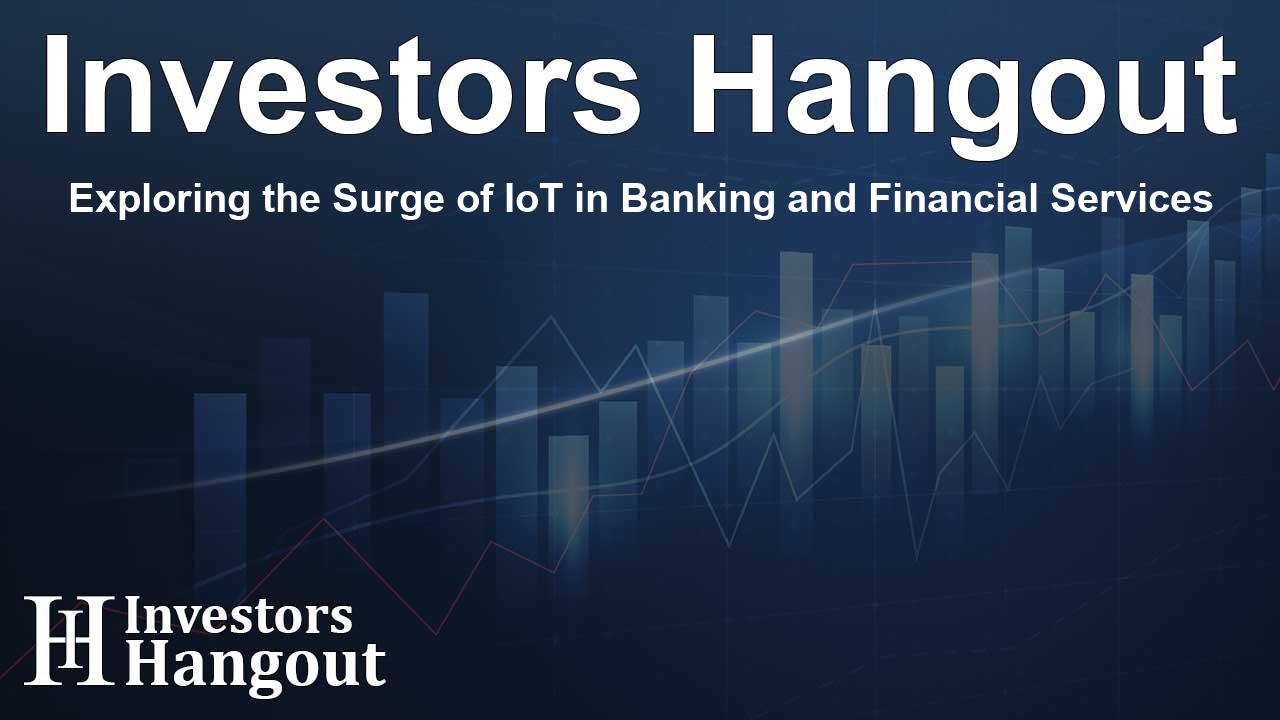Exploring the Surge of IoT in Banking and Financial Services

The Rapid Growth of IoT in Banking and Financial Services
The global landscape of banking and financial services is experiencing a significant transformation due to the advent of IoT (Internet of Things) technologies. With a remarkable forecast, the market is expected to witness an exponential growth from USD 1.27 billion in 2023 to USD 38.52 billion by 2033, achieving a staggering Compound Annual Growth Rate (CAGR) of 40.67% during this period.
Understanding IoT in Financial Operations
IoT in banking and financial services encapsulates the integration of connected devices and sensors aimed at enhancing financial operations and improving customer interactions. Financial institutions leverage IoT technologies to bolster fraud detection by analyzing transaction patterns in real time. Moreover, by utilizing data gathered from connected devices, banks can tailor customer experiences, optimize service delivery, and enhance operational efficiencies through smart ATMs and branch automation. Security plays a crucial role as well, as advanced monitoring systems and data analytics provide insights into customer behaviors, all while safeguarding sensitive information.
The Service Segment Takeover
The services segment is projected to dominate the global IoT market within banking and financial services over the coming years. This growth is primarily driven by the increasing demand for specialist support, notably in consulting, which helps organizations navigate the complexities of IoT integration, system maintenance, and implementation.
A Closer Look at Security Measures
As IoT adoption burgeons among banks and financial institutions, the need for robust security measures intensifies. The security segment is anticipated to evolve at the fastest pace within the IoT landscape, triggered by the rise in connected devices leading to an uptick in potential cyber threats. Financial entities are compelled to adopt sophisticated cybersecurity solutions to protect crucial financial data and maintain customer trust.
Banking Segment on the Rise
Among various applications, the banking sector is expected to exhibit the most rapid growth in adopting IoT resources. Financial institutions are increasingly employing IoT technologies to propel digital transformation, enhance operational efficiency, enrich client satisfaction, and innovate services across various banking operations.
Regional Insights into IoT Adoption
The Asia Pacific region is anticipated to capture the largest market share of IoT in banking and financial services during the forecast period. The region's rapid urban development is fueling demand for advanced digital banking solutions, with countries embracing IoT technologies to boost efficiency and customer service. Meanwhile, North America is projected to experience the fastest growth, as financial services firms invest in digital transformation initiatives to stay competitive in this swiftly evolving technology ecosystem.
Competitive Landscape Assessment
The competitive scene within the IoT in banking and financial services market is vibrant and varied. Organizations such as Oracle Corporation, Cisco Systems, and IBM Corp. are at the forefront of this technological evolution, continuously innovating and enhancing their service offerings. Their efforts not only focus on product development but also encompass strategic alliances and partnerships aimed at maintaining a competitive edge.
Recent Developments in the Market
In a noteworthy development, Financial Software & Systems Pvt Ltd launched IoT and AI/ML-enabled ATMs in India, emphasizing the ever-growing role of advanced technologies in reshaping banking infrastructure.
Frequently Asked Questions
1. What is the projected market size of IoT in banking by 2033?
The IoT in banking and financial services market is projected to reach USD 38.52 billion by 2033.
2. What factors contribute to the growth of IoT in financial services?
Enhanced fraud detection, improved customer interactions, and operational efficiency are key drivers of IoT growth in financial services.
3. Which segment is expected to dominate the IoT market in banking?
The service segment is anticipated to hold the largest share due to the need for specialized expertise in implementing IoT solutions.
4. Why is security becoming crucial in IoT adoption?
With increased connectivity comes heightened vulnerability to cyber threats, making robust security measures vital to protect sensitive data.
5. How is Asia Pacific positioned in this market?
Asia Pacific is expected to lead the market with significant share, driven by rapid urbanization and increasing demand for digital banking services.
About Investors Hangout
Investors Hangout is a leading online stock forum for financial discussion and learning, offering a wide range of free tools and resources. It draws in traders of all levels, who exchange market knowledge, investigate trading tactics, and keep an eye on industry developments in real time. Featuring financial articles, stock message boards, quotes, charts, company profiles, and live news updates. Through cooperative learning and a wealth of informational resources, it helps users from novices creating their first portfolios to experts honing their techniques. Join Investors Hangout today: https://investorshangout.com/
Disclaimer: The content of this article is solely for general informational purposes only; it does not represent legal, financial, or investment advice. Investors Hangout does not offer financial advice; the author is not a licensed financial advisor. Consult a qualified advisor before making any financial or investment decisions based on this article. The author's interpretation of publicly available data shapes the opinions presented here; as a result, they should not be taken as advice to purchase, sell, or hold any securities mentioned or any other investments. The author does not guarantee the accuracy, completeness, or timeliness of any material, providing it "as is." Information and market conditions may change; past performance is not indicative of future outcomes. If any of the material offered here is inaccurate, please contact us for corrections.